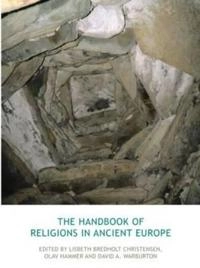"The Handbook of Religions in Ancient Europe" surveys the major religious currents of Europe before Christianity - the first continental religion with hegemonic ambition - wiped out most local religions. The evidence - whether archaeological or written - is notoriously difficult to interpret, and the variety of religions documented by the sources and the range of languages used are bewildering. The "Handbook" brings together leading authorities on pre-Christian religious history to provide a state-of-the-art survey. The first section of the book covers the Prehistoric period, from the Paleolithic to the Bronze Age. The second section covers the period since writing systems began. Ranging across the Mediterranean and Northern, Celtic and Slavic Europe, the essays assess the archaeological and textual evidence. Dispersed archaeological remains and biased outside sources constitute our main sources of information, so the complex task of interpreting these traces is explained for each case. The "Handbook" also aims to highlight the plurality of religion in ancient Europe: the many ways in which it is expressed, notably in discourse, action, organization, and material culture; how it is produced and maintained by different people with different interests; how communities always connect with or disassociate from adjunct communities and how their beliefs and rituals are shaped by these relationships. The "Handbook" will be invaluable to anyone interested in ancient History and also to scholars and students of Religion, Anthropology, Archaeology, and Classical Studies.
Åtkomstkoder och digitalt tilläggsmaterial garanteras inte med begagnade böcker





















